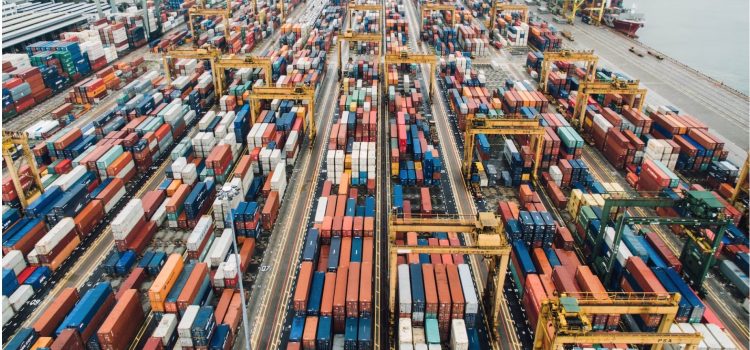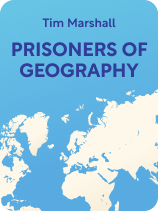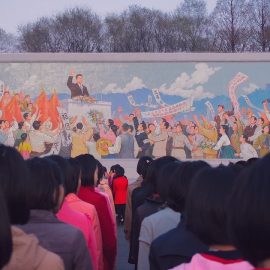

This article is an excerpt from the Shortform book guide to "Prisoners of Geography" by Tim Marshall. Shortform has the world's best summaries and analyses of books you should be reading.
Like this article? Sign up for a free trial here.
Why do Latin American countries struggle to grow and connect with each other? Why do superpowers want close relations with Malaysia, Singapore, and Indonesia?
According to Tim Marshall in Prisoners of Geography, the answer to these questions lies in geography, specifically the geography related to trade routes. He explains how trade routes shape development and why nations compete to secure these routes.
Read more to learn the basics of international trade geography with some examples to illustrate the ideas.
Trade Routes Shape Development
To understand international trade geography, you must first see how the presence or absence of safe routes for trade and transportation shapes a nation’s economy and relationships with other nations as it develops.
(Shortform note: As global demand for different goods has risen and fallen over time, so too has the influence of different international trade routes. For instance, the global silk trade brought wealth to Central Asian countries for centuries, but, when faster routes were discovered, the silk trade became less lucrative for the countries cut out of the loop.)
As an example of the relationship between trade routes and development, Marshall describes how the geography of Latin America has impeded its nations’ efforts to grow and connect to one another. Specifically, Marshall argues that, aside from their coastal regions, many Latin American nations have few resources, with interiors that are difficult to traverse and plagued by disease-bearing mosquitos. As a result, while Latin America has cultivated many large, successful capital cities, they’re all located on its coastlines, isolated from each other and the rest of their countries.
(Shortform note: Some authors point out that both geography and politics shape development along Latin American trade routes. These authors note that while difficult terrain does make transportation more expensive in Latin America, the inefficiency and cost associated with Latin American border crossings also hamper development. Delays at international customs can be especially punitive for farmers, whose products often spoil while waiting in hours-long immigration lines.)
Nations Compete to Secure Trade Routes
Nations seek to secure profitable trade routes. Controlling major trade routes gives nations influence over all the other nations that use those routes, making these routes especially strategically important.
(Shortform note: Competition for control of trade routes was especially heated during the European colonial period. From the 15th to the 17th century, nations such as Portugal, Spain, and the Netherlands fought for control of the most lucrative routes, hoping to efficiently ferry wealth from their colonies to their home countries.)
As an example of nations vying for control of important trade routes, Marshall references the Strait of Malacca, which is jointly controlled by Malaysia, Indonesia, and Singapore. China ships massive amounts of oil through the strait, as do many other countries. As a result of the strait’s economic importance, the US and China are both trying to draw Malaysia, Singapore, and Indonesia closer to them.
(Shortform note: The Strait of Malacca’s importance to the global economy has made it a prime target for piracy. While piracy in the area has increased, the region’s governments are often unable to prosecute pirates for crimes that happen in waters controlled by other nations. Commentators contend that unless maritime law is changed, piracy will likely continue to be an issue in the Strait of Malacca.)
Along with these economic choke points, Marshall argues that nations strive to gain access to deep harbors that are usable in winter. Russia in particular has no domestic ports that allow it to engage in trade or combat on the seas year-round—while Siberia has several ports, they aren’t usable for much of the winter. Marshall argues that the goal of Russia’s 2014 annexation of Crimea was to gain access to a year-round port on the Black Sea.
(Shortform note: As evidence for the importance of ports and harbors, experts note that as much as 80% of global commerce is shipped by sea. Because of the potential economic windfall associated with global ports, Russia has made major economic sacrifices to pursue them. Commentators note that while it boosted domestic morale, the annexation of Crimea may have cost Russia more than $80 billion in total.)

———End of Preview———
Like what you just read? Read the rest of the world's best book summary and analysis of Tim Marshall's "Prisoners of Geography" at Shortform.
Here's what you'll find in our full Prisoners of Geography summary:
- Why some nations thrive and others struggle with poverty and inequality
- How a nation's geography determines its fate
- Why nations are always preparing for international conflict






